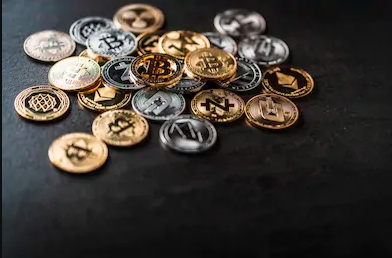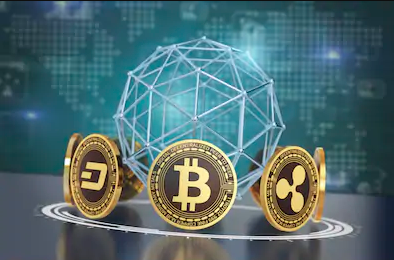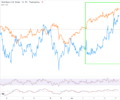The crypto market is currently in its infancy. The laws of the game are forming right before our eyes. One of the most pressing issues that needs to be solved in the near future is information and price manipulation, which will most likely be done by the authorities regulating the cryptosphere, no matter how much crypto-enthusiasts and crypto-anarchists opposite it. However, like any solution, this solution too will have its pros and cons.
The hypothesis of market efficiency

In the mid 50s-early 60s of the XX century, several economic trends emerged (for example, the concept of “limited rationality” and “rational expectations”), based on which the concept of market efficiency was developed in the 70s. The hypothesis concerns the effect of information on the market value, and implies that all material information is immediately and fully reflected in the market value of the asset.
To ensure market information efficiency, four conditions need to be met:
- Information becomes available to all market participants simultaneously and at no cost.
- There are no transaction costs, taxes and other factors that prevent transactions.
- Transactions made by an individual cannot affect the overall price level.
- All market participants act rationally, trying to maximize the expected benefits.
Since all of the above conditions are not met in practice, the hypothesis distinguishes 3 degrees of market efficiency:
| Degree of market efficiency | Information that the market operates |
| Weak | The value of the asset fully reflects the past information about the asset (information about the past condition of the market, the dynamics of exchange rates and trading volumes) |
| Semistrong | The value of the asset fully reflects not only the past, but also public information (public information provided in the press, company reports, speeches of government officials, analytical forecasts, etc.) |
| Strong | The value of the asset fully reflects all information – past, public and internal (inside information that is known to a narrow circle of people due to official position or other circumstances). |
The main threat to efficiency is the inequality in the awareness of trading participants (par. 1), as well as factors related to price manipulation (par. 3). If we talk about a fairly young crypto market, we can see that there are more manipulations and fraudulent actions than in the classical markets. On the other hand, transaction costs (par. 2) are much lower (at least until the taxation mechanism is debugged).
In a perfectly efficient market, where all conditions are met, prices always reflect all known information, new information causes an immediate price change. In that situation, it is possible to receive surplus profits only by chance.
Real markets (for example, material goods markets) may not be effective in the short term. Some time ago Apple invented the concept of the smartphone and monopolized the market, receiving surplus profits from sales. However, after a while, many competitors appeared on the market and the production profitability decreased. As a result, markets strive for efficiency in the long run, losing their initial surplus profitability.
The crypto market is not an exception. At the moment, due to the combination of a manipulative component and low transaction costs, this market can be called striving for efficiency. That means that the surplus profitability that traders are used to in this area will disappear over time.
Manipulation
There is no single definition of what market manipulation is, but according to the US Securities and Exchange Commission (SEC), the following definition can be considered as the most complete: “any action aimed to create false price benchmarks”.
Usually there are three directions of price manipulations:
- Price increase. The most common direction — the manipulator facilitates an increase in the asset quotation and then sells it to the buyer at an increased price.
- Price stabilization. The asset is artificially stagnated, and prices are better than those that would be established naturally. Sometimes such manipulation is officially allowed, for example, in the initial placement of a new issue of securities.
- Price decrease. It mainly involves “bear raiders” who make a profit by making short sales without cover. This direction is believed to be most rare.
Let’s try to tentatively classify price manipulations, highlighting several types that occur in the cryptocurrency market:
 1. Action-based manipulation. In this type of manipulation, manipulators (usually high ranked employees of the company) take any action (for example, close production), which affects the price of the asset.
1. Action-based manipulation. In this type of manipulation, manipulators (usually high ranked employees of the company) take any action (for example, close production), which affects the price of the asset.
An example of this manipulation can be a “joke” that happened during the Savedroid project. On April 18, 2018, their ICO website reported that the project had been closed, and the funds collected during crowdsale disappeared along with the CEO of the company.
Why is this considered manipulation if the following day the information was disproved, but the coins are not yet listed in any of the crypto-exchanges? The matter is that in addition to crypto exchanges, there is OTC trading, which occurs directly between market participants, for example, through messengers (Telegram, Skype, etc.). Also, if you actually have tokens (ERC20 Standard) in your wallet, you can trade them on decentralized exchanges, such as EtherDelta, using smart contracts. Taking into consideration that the ICO ended on March 9, we can assume that SVD tokens had been already distributed among investors by the time the “joke” happened.
Of course, when the token owners hear the news, they would panic and try to sell the tokens at almost any price. Thus, using a group of controlled buyers, it is possible in fact to repurchase tokens at a knockout price. If this happened, then there is the price manipulation.
2. Information-based manipulation. In this form of manipulation, manipulators spread rumors or incorrect information to influence asset prices. There are several types of this manipulation:
2.1. Manipulation based on inside information (insider trading). Employees of the company or any other persons who have access to internal (inside) information, use it for the purpose to obtain their own benefits.
The classic method of manipulation. Knowing in advance about important decisions, the manipulator, usually through controlled market participants, buys or sells the asset (depending on the positive / negative impact of the insider). In classical markets, such actions (as well as other types of manipulation) are prohibited at the legislative level.
In the end of last year, a class-action lawsuit was filed against Coinbase cryptocurrency exchange, in which the platform was accused of inside trading during the listing of Bitcoin Cash. Even the management of the exchange admits that inside trading was carried out by at least one of the employees.
2.2. Manipulation of information and financial indicators. In the stock market, that means that the manipulator deliberately misrepresents information, including the information presented in the financial statements, in order to create a more favorable view of the company’s condition and thereby affect the value of shares.
Unlike the fully regulated US stock market, companies that conducted ICO are not required to provide financial statements according to the regulation standards at the moment. Therefore, below are a few examples representing the two areas: a number of companies that underwent the IPO decide to change the scope of practive, usually adding the word blockchain to their name. One of the brightest examples is the company Riot Blockchian. The US Securities Commission already showed interest in the company and asked it to provide certain information in connection with the huge increase in the value of its shares. As a result, the authorities began a criminal investigation against the group, which includes the former head of the company.
One of the subtypes of such manipulation in crypto trading is Pump & dump (Ramping). In the information space, an information drive is created, usually aggressively replicated, often in several stages and on different sources of information.
In the context of the crypto market, we can give an example with the tweets of the notorious John McAfee. After the information on various ICOs was published in his Twitter, the value of these coins usually increased dramatically. According to John, the projects undergo a strict selection process, but the numerous “coincidences” of the release of his tweets and the sharp increase in the value/capitalization of the coins listed in them cannot but raise questions:
Quite often, pumps are carried out through groups in messengers (there are a lot of similar channels in Telegram). Manipulators buy coins at a low price (in small parts, so as not to affect the rate and capitalization), then artificially raise the price by making transactions using the puppet accounts of the pump channels` participants. The coin price is growing, and pump participants are trying to spread false information about the coin against the background of its growth through various information channels (usually chat exchanges). This forces third-party traders to buy it. After that manipulators sell the asset at a profit, dropping the price. Low-liquid altcoins with low capitalization are usually used as such assets, and the victims of such actions are often the participants of the pump channels themselves, who did not have time or could not sell the asset in time.
3. Trade-based manipulation. This type of manipulation can be divided into several categories of collusion and/or manipulation practices, according to The FX Global Code:
- practices that give a false impression of market price, depth or liquidity: fictitious trades, matched orders;
- entering a bid or ask/offer with the intention to withdraw it before executing a transaction: spoofing, flashing, leering. Mainly used in high-frequency trading.
3.1.1. Wash trades. A transaction where the owner of an asset or a derivative contract does not change. In other words, the manipulator buys and sells his or her own orders. The purpose of this manipulation method is to create the appearance of activity in the market, artificially inflating trading volumes and prices.
3.1.2. Double trade/matched orders. Types of wash trades. Transactions in which both buy and sell orders are entered at the same time with the same price and quantity by different but secretly conspiring parties, or between different accounts (so-called puppet accounts) of the same manipulator. They are often held on several exchanges which makes it difficult to locate them.
3.2.1. Spoofing/Painting the tape. The manipulator places a large number of orders for the purchase/sale of assets, without the intention to make transactions and cancellation of these orders before execution. The purpose is to collect information about supply and demand, attract the attention of market participants, and artificially create a favorable impression of trading activity or price movement of the asset.
3.2.2. Flashing. A short-term display of quotations in the market without the intention to make a trade in order to create a false impression of the actual market prices.
3.2.3. Layering. The manipulator places multiple orders to buy/sell an asset at different levels with the intention of canceling them before execution in order to influence the price and liquidity of the trading instrument.
Some crypto exchanges use similar manipulation practices to promote the price of crypto assets. The researchers from Tel Aviv University and the American University of Tulsa confirmed the wash sale of Bitcoin by two bots (Willy and Markus) on the MtGox exchange in 2013. Both bots made wash trades of about 100 BTC per hour with small time intervals but did not have such a volume of cryptocurrency at the moment. When the bots were actively working, there was also increased trading activity on other exchanges, and the rate of the main cryptocurrency increased.
It is worth mentioning a remarkable conflict between a blogger nicknamed Bitfinex’ed and the cryptocurrency exchange Bitfinex. He accuses the exchange of allowing its engine to make wash trades (video illustration).
At the end of August 2017, the exchange had the opportunity to make the following:
- Open a buy (sell) order for BTC or any asset that trades on Bitfinex.
- Open a similar sell (buy) order.
- The trading engine will trade with your own order.
In addition to Bitfinex, the blogger continued his investigation of the Coinbase and GDAX exchanges. There he discovered abnormal activity (video) that was triggered by a bot named Spoofy. He called the modification of this bot in other posts “Picasso” (in honor of the famous artist Pablo Picasso) because it “draws a line” on the quotes of stock prices. To prove his point, the blogger attached to his publication a video on how the bot worked on the GDAX and Bitfinex platforms in the beginning of December 2017. On these exchanges, the Bitcoin exchange rate unexpectedly increased by several thousand dollars compared to other trading platforms.
In March 2018, Bitwise Asset Management prepared a report for the SEC, which concluded that 95% of trading volumes on unregulated exchanges are rigged. If we assume that the above examples with trading bots are only the tip of the iceberg, which is pretty credible, the disappointing conclusion is obvious that cryptocurrency trading is extremely manipulative. This creates a serious obstacle to the development of an effective cryptocurrency market and makes it difficult to analyze the market, but on the other hand, provides super-volatility and super-profitability/superunprofitability of trading operations.
Regulation and anti-manipulation
 Each type of manipulation requires a separate instrument of control and prevention. However, we can talk about a full-scale war with a similar impact on the market only after the crypto market is going to be regulated on the legislative level.
Each type of manipulation requires a separate instrument of control and prevention. However, we can talk about a full-scale war with a similar impact on the market only after the crypto market is going to be regulated on the legislative level.
Today, the regulation of the cryptosphere is one of the most important questions that almost all countries of the world are trying to answer, but the crypto community pays special attention to the news from the United States. In America, an important factor is the differentiation of regulatory spheres. Which agency will oversee cryptocurrencies – SEC, CFTC or FinCEN? Maybe they’ll split the control zones. Or maybe a new self-regulatory organization will be created? The Maloney Act, an amendment of 1938 to the Securities Exchange Act of 1934, allows to create such agencies to manage the OTC market.
There is no answer to this question yet, and each agency will act independently. For example, the US CFTC has announced a reward for helping to detect Pump & dump schemes. The SEC periodically accuses the ICO projects and their founders of fraud. FinCEN conducts its own investigations against blockchain companies. It is obvious that when the organizational issues are solved and legislation and taxation are created and/or clarified, there will be less manipulation in the crypto market.
In the US, there are movements now aimed at monitoring and verifying the activities of the main crypto-exchanges. Most of them cooperate with the government authorities, but there are those who oppose that. Among other things that need to be tested and implemented on the exchange (crypto is no exception) are automated market tracking systems. The task of such systems is to find anomalies in the trade and investigate them to find/prevent the trade manipulation.
One of the best systems of automatic market surveillance is the SMARTS system (Security, Market, Automated, Research, Training & Surveillance), created in Australia in the late 90s. It is used on several stock exchanges, including NASDAQ, and on the Gemini cryptocurrency exchange since spring 2018.
***
In the conclusion, we should say that the work on regulation and combating manipulation in the crypto market is already actively underway and is only gaining momentum. Time will show what the outcomes are in the end. Maybe most of the major trading platforms will completely or partially switch to decentralized solutions. Or maybe, huge liquidity will come to the market with regulation, as it happened in 1995 at the DAX after the adoption of the relevant amendments to the Law on Securities Transactions and on Exchange Activity in Germany. One way or another — the changes will not take long.
Read more
https://fortraders.org/en/forex-education/crypto/what-is-a-smart-contract.html



 SP500
SP500 FTSE
FTSE FCE
FCE Nasdaq100
Nasdaq100 Russell2000
Russell2000 Index Nikkei225
Index Nikkei225 DOW 30 (DJI)
DOW 30 (DJI) RTS futures
RTS futures RTSI
RTSI DAX30
DAX30 eBay Inc.
eBay Inc. Google Inc.
Google Inc. IBM Corp.
IBM Corp. Microsoft
Microsoft  Apple
Apple Yandex
Yandex Toyota
Toyota Volkswagen
Volkswagen Facebook
Facebook Tesla
Tesla Twitter
Twitter Hasbro
Hasbro Bitcoin
Bitcoin Litecoin
Litecoin BitcoinCash
BitcoinCash Dash
Dash Ripple
Ripple Ethereum
Ethereum EmerCoin
EmerCoin NameCoin
NameCoin PeerCoin
PeerCoin Monero
Monero ETC/USD
ETC/USD Silver
Silver Platinum
Platinum Palladium
Palladium Copper
Copper Gold
Gold